Hunting the 'Big Five' on South Africa's walls
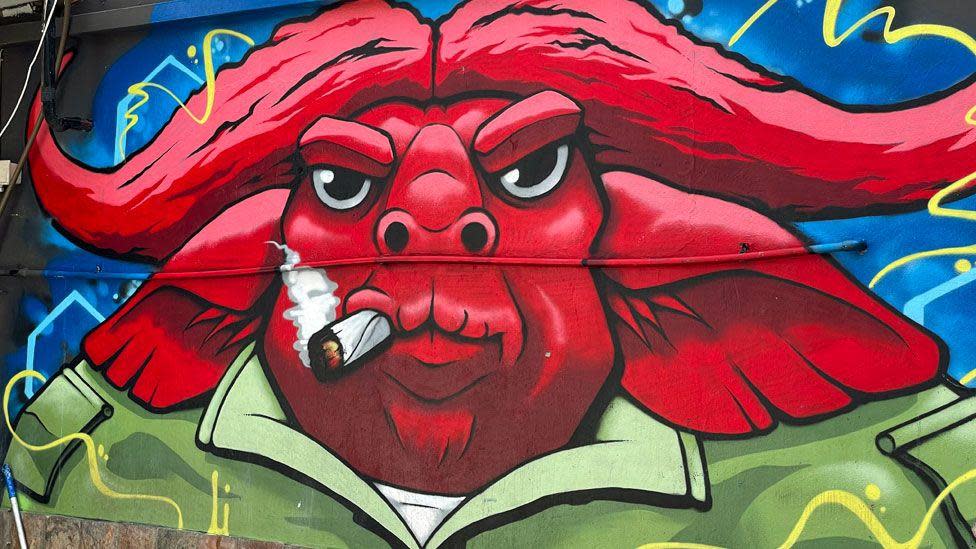
“Today we’re going to look for the ‘Big Five!’” South African guide Eelco Meyjes announces from the front of his safari vehicle - a strange thing to hear on the streets of suburban Johannesburg.
But he is not talking about game, but the wildlife depicted in the city’s graffiti.
Infamous for its crime levels and the high walls topped with electric fences, there are many other sides to South Africa’s beating commercial heart - including what is painted on the surfaces of those walls.
Mr Meyjes, a local entrepreneur, studied art at the city’s University of the Witwatersrand, and this led him to an appreciation of its dramatic street creations.
His first tours began on two wheels. These continue but he expanded into an urban safari in 2021.
As we set off in our green safari vehicle from a local restaurant, he warns us jovially: “You’ll have to look carefully to find the animals painted on the walls.
“It’s more difficult to do inner city tours than those in the bush. There’s traffic everywhere. And, of course, there are the potholes to avoid!”
Our first stop reveals a wild-looking pink buffalo smoking a thick cigarette or perhaps a joint.
We’ve spotted the first of our "Big Five" - the term coined by big game hunters in the 19th Century, referring to elephant, rhino, buffalo, lion and leopard.
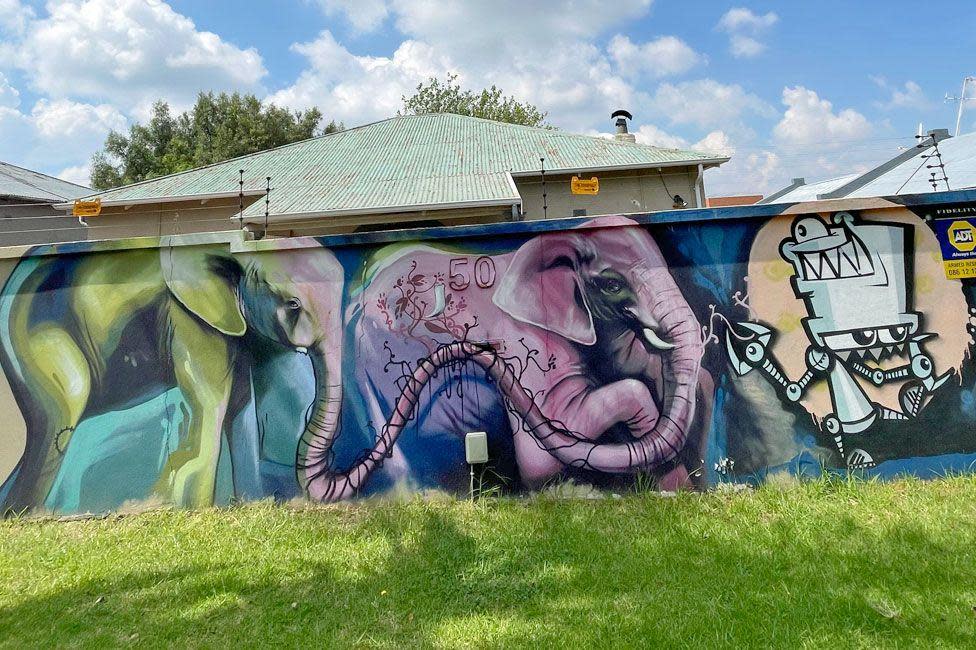
We drive on through the cool, crisp air of a Johannesburg autumn.
The suburban gardens are still green and there is graffiti on so many walls that the casual observer might miss.
A pink elephant, another of the Big Five, and a robot vie for attention with a giant lizard wearing red sneakers. A wall of remembrance is painted for those graffiti writers who have died.
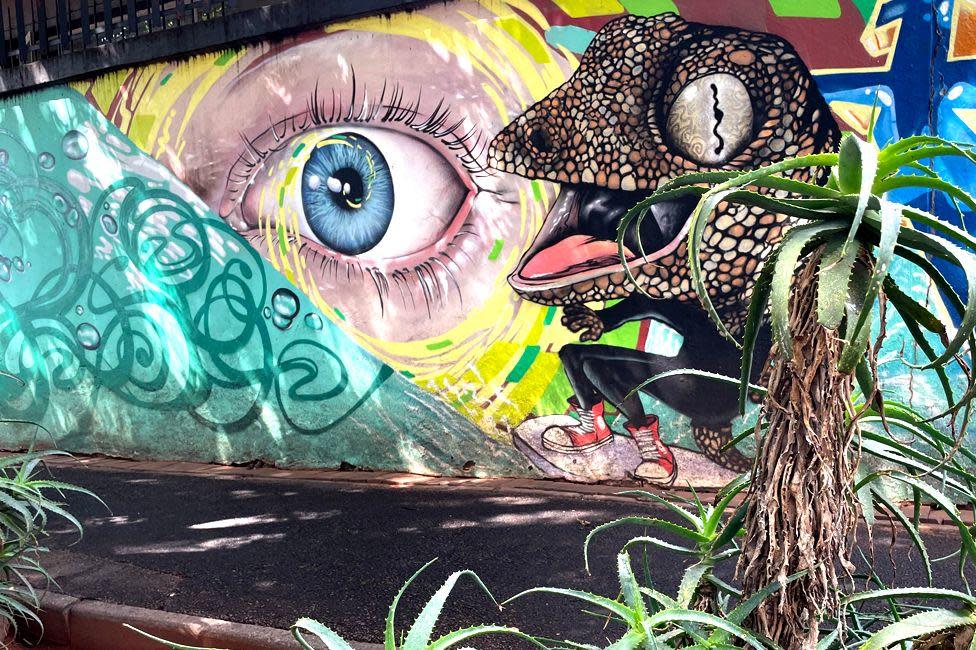
We head downtown where we meet a graffiti artist who goes by the name of "Gazer".
“I’ve been doing this for eight years," he says as he works.
"I started skateboarding and my friend was into graffiti. He taught me how to draw and then to paint on walls.”
“Mostly I do commissions," he explains, though it is not all as formal.
“Usually it’s safer during the day, but some places you can only go at night.”
Gazer is an uncompromising artist.
“I enjoy it when people enjoy it, but some don’t understand. It’s not for the public. It’s for individual expression. It’s all about the soul.”
“Slegh”, also known as “Krinky Winky”, is another artist at the gallery who responds to those who think graffiti is destructive.
“All I’m doing is applying one millimetre of paint to a wall. So, if you call that destruction, that’s your outlook," he says.
“But so many things ruin the neighbourhood, billboards, ads, corporate signs. Graffiti brings everybody together from so many different backgrounds, and highlights political issues.”
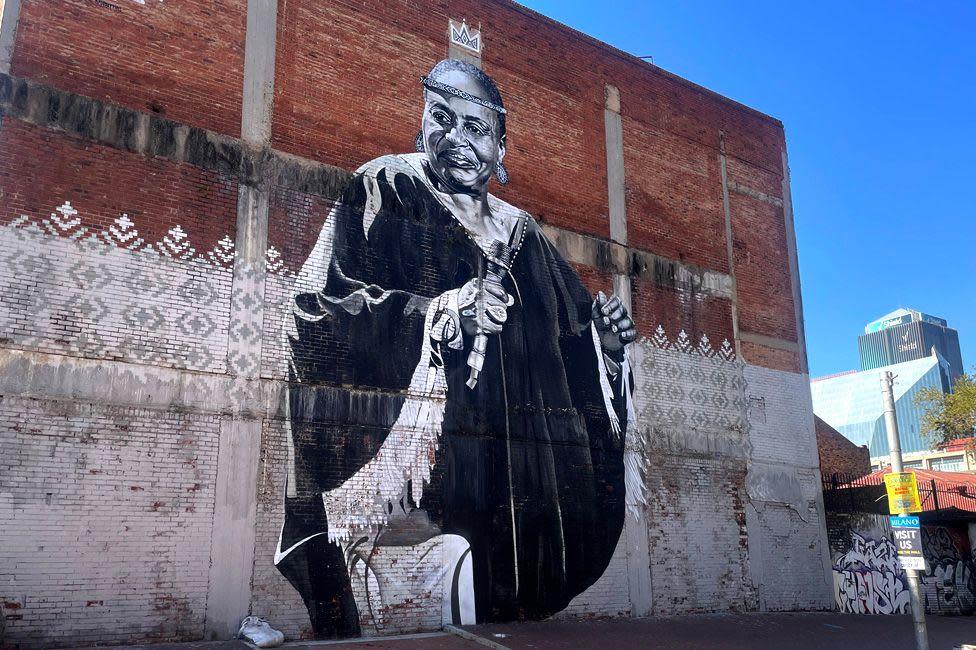
Graffiti is not just a suburban thing - and brought renown to some like “Dbongz” Mahlathi, who is from a township west of Johannesburg.
“I was introverted and so it was my way of speaking,” he recalls.
“I would go out at night and do illegal graffiti, but doing it was my dream. It was a way out of the township.”
Dbongz started following his dreams when he was 18. Today, nearly 20 years later, he has moved from guerrilla graffiti to celebrated street artist.
One of his most notable works downtown is a giant mural of the late jazz artist and anti-apartheid activist Miriam Makeba, who was known as "Mama Afrika".
“I was commissioned to do this by the city to tell the story of South African jazz.
“Graffiti is protest culture, very often political, but street art is more narrative. I’m living my dream and I want youth in the township to see me as a role model and believe in their creative dreams.”
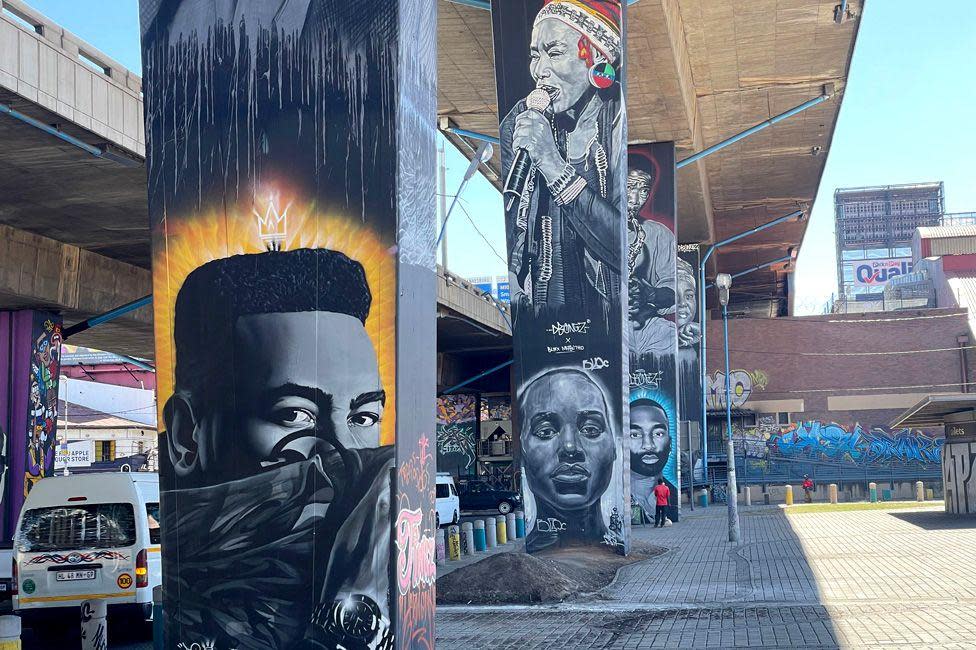
Melissa Calucci, the convener of the International Public Art Festival in Cape Town every year, says that Johannesburg "is the mecca for graffiti".
“The culture there is more welcoming to use it for the benefit of the city.
"For the last 20 years it has developed and now the level is very good - some artists have even gone overseas.”
We leave the gallery, and our vehicle turns sharply to avoid a massive pothole and then drives down a narrow alley reeking of urine.
“This is where the guys practice,” Mr Meyjes says.
“They help one another learn. It’s a brotherhood.”
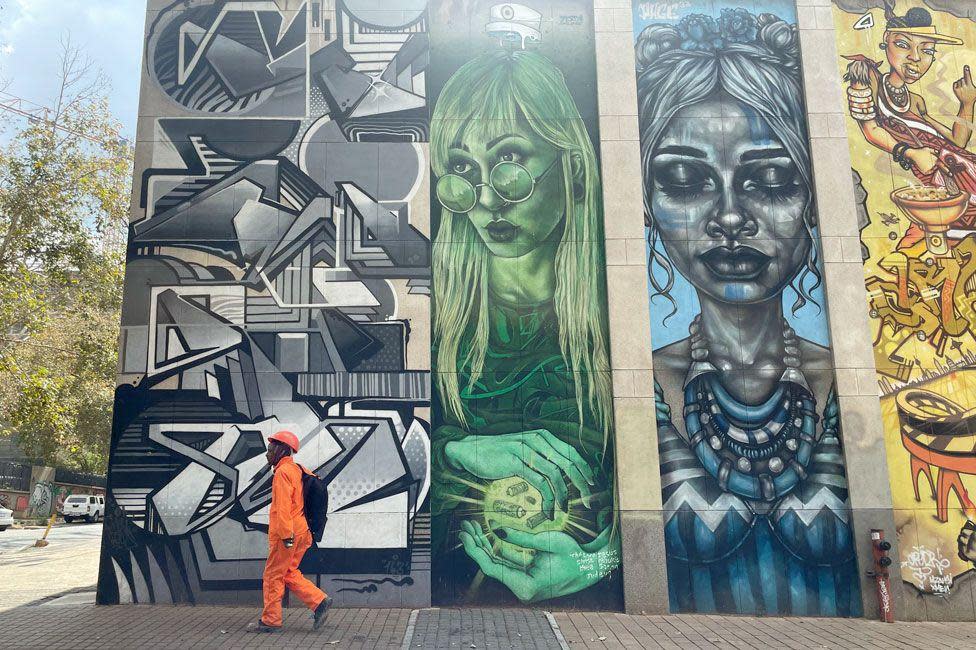
The highlight of the tour is a massive set of astonishing panels painted on a building in downtown Johannesburg (see above).
“Work like this uplifts the area. It rejuvenates the whole street,” Mr Meyjes says.
The work is impressive. And we’re sorry to end the tour, despite not seeing all the Big Five.
“Graffiti is growing all the time,” our Graffiti Urban Safari guide says as we drive back.
“It’s becoming a fashion statement for corporates. We’ve had quite a few architects on these tours, looking at ways to bring some life to a building that needs some colour.”
He turns to look at me from the guide’s seat in the vehicle: “We want to turn Joburg into the biggest graffiti park in the world.”
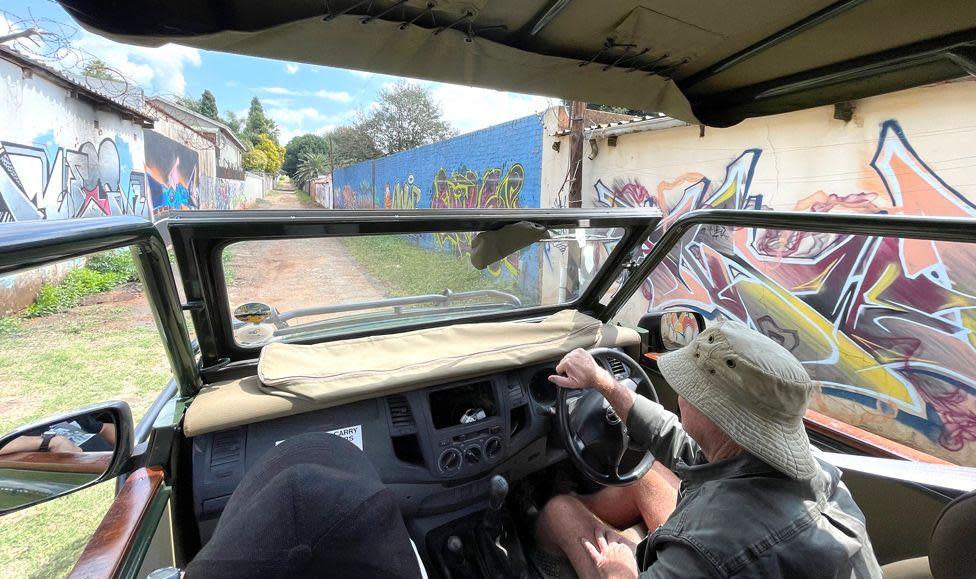
Hamilton Wende is a freelance journalist based in Johannesburg.
You may also be interested in:
Amoako Boafo - the Ghanaian artist who has exhibited in space
Nigeria's Looty seeks to reclaim African art in digital form

Go to BBCAfrica.com for more news from the African continent.
Follow us on Twitter @BBCAfrica, on Facebook at BBC Africa or on Instagram at bbcafrica
